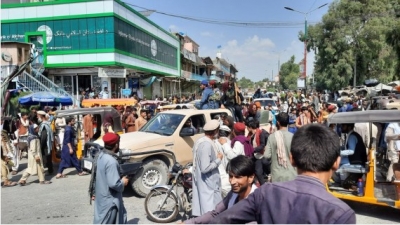It is not just a political crisis that is unfolding in Afghanistan. The aid-dependent country is in the midst of a financial crisis as well. The Taliban, which is now in control of Kabul, is in desperate need of financial resources to run the country. Sources have told India Narrative that the current available financial resources with the government can only see them through till the end of the month
“Taliban won militarily – but now have to govern. It is not easy,” Ajmal Ahmady, Afghanistan’s acting Central Bank governor, who has fled the country, wrote. He added that the accessible funds that the Taliban can dig into are estimated to be about 0.1 per cent to 0.2 per cent of Afghanistan’s total international reserves—which is “not much.”
The US has frozen the $9.5 billion reserves that the country has in overseas accounts.
Also read: Taliban won’t get $9 bn reserves held in US and Swiss banks, says Afghan central bank chief
While the value of the Afghani—Afghanistan’s currency—has nosedived, there is little money left with the banks as the locals have withdrawn whatever was available.
The banks have also been unable to provide dollars due to the freezing of the overseas bank accounts, leading to chaos and panic.
At this point, it is also unlikely that donor countries will come forth.
The Taliban will perhaps have to rely on a few Islamic countries for aid and support but it is still not clear what stand these countries including Saudi Arabia would take.
For a country, where grants have financed around 75 per cent of the public spending, choking of aid would lead to crumbling of the economy.
Also read: Taliban’s bid to change Afghanistan’s national flag ignites fierce backlash
The World Bank said that with an influx of aid since 2002, Afghanistan sustained rapid economic growth and improvements against important social indicators for more than a decade. Annual growth averaged 9.4 per cent between 2003 and 2012, driven by a booming aid-driven services sector, and strong agricultural growth.
At the Geneva conference in November 2020, donors renewed their commitment to aid support to Afghanistan for 2021-2024. “However, several major donors provided only single-year pledges, with future support made conditional upon the government achieving accelerated progress in efforts to combat corruption, reduce poverty, and advance ongoing peace talks,” the World Bank said.


















